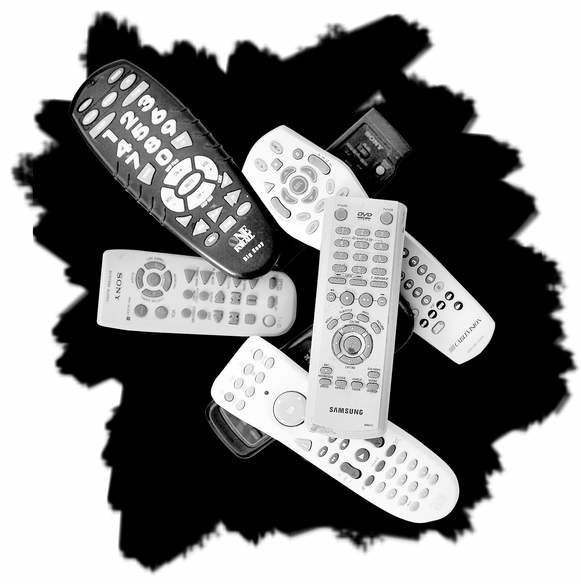The universal problems with universal remotes
Published 4:00 am Tuesday, January 25, 2011

- Universal remotes promise to replace remotes for every device in a home theater, but many lose key functions of each device.
The universal remote control is one of the modern world’s great ideas, right up there with the automatic dishwasher, Wi-Fi and flush toilets. The theory behind this gadget is both simple and sublime: In an increasingly automated and connected world, wouldn’t it be wonderful if we could manage all our blinking machines from a single super controller?
Indeed, the vision is so irresistible that since the invention of the universal remote back in 1985, it has popped up everywhere. There’s a good chance that your television, home theater system, cable box and every other device in your living room includes some kind of “universal” remote. There’s an even better chance, though, that you’ve never used any of those universal functions. Each remote stands alone — you reach for one to control the channels, another for volume, another for the DVD player and so on, your coffee table and your brain more crowded than a Tokyo train at rush hour.
I wish I could tell you that there is a better way. But after testing many different universal remotes — cheap remotes, expensive remotes, smart-phone remotes — I don’t have much good news to report. Sure, some universal remotes are more useful than others, and one of them is almost pretty good, but in general these devices remain more appealing in theory than in practice. That’s because they all suffer from an inherent, usually fatal flaw: Universal remotes cannot possibly offer enough buttons to mimic all functions of all devices, so they usually have to make compromises, cutting out buttons here and there. The trouble is, some of those buttons are important.
Basic remotes
At $10, the Sony Remote Commander is one of the most basic of universal remotes. How basic? It’s got just a handful of main buttons: channel up and down; volume up and down; mute; and a number pad for choosing channels. If your television and cable box date from the first Bush administration, this is the controller for you. Any gadget made during the last five years, though, will not benefit from this remote. It includes no button to turn on an on-screen guide, for instance, no controls for recorded television shows, and no way to scroll through an on-screen list.
Two other remotes I tested were made by URC. Both remotes were disappointing. Surprisingly, the more expensive model — the URC-R50, which sells for about $90 — was less useful and more annoying than the cheaper one, the URC-WR7, which goes for just $20. I liked the shape and weight of this low-priced remote, and I liked that it included buttons for nearly every feature on my TV. But “nearly” is the key word; nearly every button isn’t nearly enough. I found that the WR7 was missing a button for one of the crucial features on my newish television, an on-screen menu of options and settings. Without that button, I found myself often reaching for the original remote — and if I had to do that, why get a universal?
Playing alphabet soup
The more upmarket URC-R50 was missing the same button. Or, at least, I think it was. I’m not sure because in addition to the standard rubber buttons, this remote includes an LCD screen that offers even more controls. At first this sounded great — a digital screen enables the remote to add functions that are specific to your television, and thus would seem to address the missing-button problem I’d had with other remotes.
But then I took a look at the R50 and scratched my head. For my television, the remote’s LCD screen offered several options with inscrutable labels that would have made more sense to a robot than a human. One on-screen button was called MTS, another DIGHD, another ANAHD. Huh? Did I dare press MTS to see whether it was the missing button I was looking for? The R50’s directions did not address these issues. Fearful that it would summon some kind of demon from deep within the recesses of my flat-screen, I declined.
The R50 includes another feature found on several high-end remotes: macros. These allow you to press one button and have the remote perform a series of actions automatically. For example, you might create a “Watch TV” macro that will turn on your television, turn on your cable or satellite box, set your television’s correct input setting, and perhaps display your on-screen guide. Unfortunately, I found it too much of a hassle to set these macros up.
Best of the bunch
Now we come to the best device in this bleak landscape — the Logitech Harmony One.
Think of the Harmony One as the Mercedes-Benz of universal remotes. It is thoughtfully designed, well-constructed and — at $170 — expensive. It takes a bit more work to set up than other remotes — it took about a half hour to set up the Harmony One for my entire home theater system.
I particularly liked the Harmony’s ability to establish a series of macros — it calls them Activities — by itself. Even better, the Activities work most of the time. Press “Watch TV” on the Harmony’s LCD screen and it arranges both your television and cable box to the right settings. It was so good at this that after using the Harmony for a couple of days I thought I might be able to jettison all my other remotes.
But then the Harmony’s tune began to sour. One persistent problem was the occasional omission of an important step in an Activity — in trying to set up my system to listen to music, say, it might forget to set the television’s input to my CD player, or it might turn my TV off instead of on. And for all its sophistication, the Harmony exhibited the same flaw I found with every other remote — it lacked certain significant functions for each of my devices.
Where’s the perfect device?
There has been a move to address this shortcoming through smart phones and other touch-screen devices, and there is a certain logic to this idea: Your iPhone is connected to the Internet and its screen can be quickly changed to show any device’s controls, so couldn’t it be the perfect universal remote?
As a standard remote for television and home theater, though, I found the iPhone lacking. To control entertainment gadgets from my phone, I used a $160 RedEye, a small console that sits in your living room and takes commands from the RedEye app.
But RedEye is just not ready for prime time. Its app required too many frustrating steps to find the correct codes for my television and other gadgets. Even worse, the app displayed the commands for each of my devices as an alphabetical list — I had to scroll down to find the Volume Up button, scroll back up to find the Channel Up button, scroll again to find the button for a specific channel.
Soon I stopped scrolling and reached for the zoo of remotes that have always clogged my coffee table. Sure, I’d love one good remote that would allow me to control everything. But that dream device isn’t here yet.






